
Curated with aloha by
Ted Mooney, P.E. RET

The authoritative public forum
for Metal Finishing 1989-2025

-----
Removing calcium and zinc from rinse water on aluminum anodizing line
Q. Hello,
I am the lab manager at an aluminum anodizing facility, however this is my first time working a position in the anodizing field. I come to you today with a specific question in regards to the general issue of white spots on type II anodize.
My process:
slightly alkaline cleaner (city) > alkaline etch (city) > three-acid de-smut > anodize > dye > seal (rinses w/cflow)
All tanks after the etch rinse are DI water.
Where I think the problem is:
I believe my problem is either from 7xxx series aluminum leaving behind zinc or from calcium in the city water. The specific parts that saw white spots were 6xxx series aluminum, but Mr. Probert's wonderfully helpful "WHERE DO 'WHITE SPOTS' ON ANODIZED ALUMINUM COME FROM?" led me to consider this as my most likely source.
I ran a very small pick over the spots to ensure they did receive an even anodize and seal; No pitting large enough to catch with my pick occurred. Since the white spots appeared to be underneath the seal, I wasn't able to do any sort of chemical testing to determine a culprit salt specifically. We do use a glycol in our anodize tanks, which can form a salt with calcium. We also do have some nitrates present in our de-smut, which can form a salt with the zinc.
Other possible salts that could've created this:
Calcium acetate
Zinc acetate
Zinc sulphate
My proposed partial solution:
I would like to have the deox (de-smut) rinse tanks plumbed for chilling to drop the zinc out before reaching the anodize to eliminate one source of the problem. I do understand that this will hold onto the calcium, but I am unsure at what point it would be best to have a high temperature rinse, so that this can be mitigated.
I'm also unsure if the zinc or the calcium is the larger issue and if I lose the 50/50, I am afraid it will make the problem worse.
We seldom see white spots like the ones on these parts, so I'm unsure if changing our degrease and etch over to DI water is necessary/called for. We are very close to throughput usage on our DI, so I would prefer to try other methods first.
Lab Rat - Fort Wayne, Indiana
December 19, 2024
A. White spots aren't just white spots. They can be all kinds of things. My first question would be, in regards to the what kind of white spots they are?
You said you used a pick but it didn't catch. And you believe they are beneath the seal.
If they are beneath the seal, it may just be lacking color. In that case, the aluminium would be anodized and sealed, meaning that you can't check for continuity. But have you tried? Even if it is a pitting of some kind, it it can sometimes be very difficult to feel as an indentation.
What does the white spots look like? And under a microscope? Doesn't need to be a fancy one, but a simple digital hobby one is an amazing tool, if for no other purpose than to see things in a better and clearer way with good lighting.
for Shops, Specifiers & Engineers
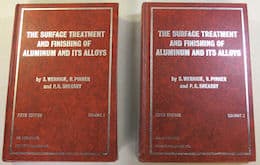
avail from eBay, AbeBooks, or Amazon
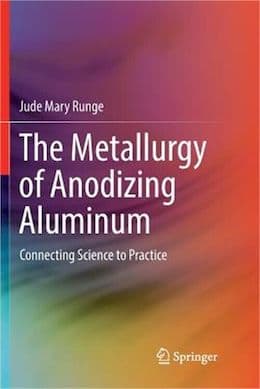
avail from eBay, AbeBooks, or Amazon
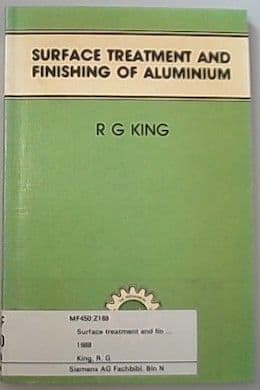
avail from eBay, AbeBooks, or Amazon
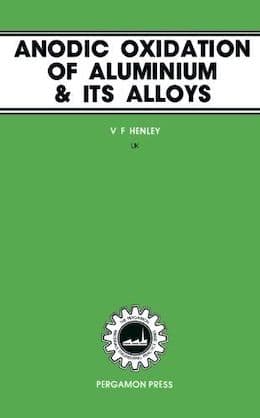
avail from eBay, AbeBooks, or Amazon
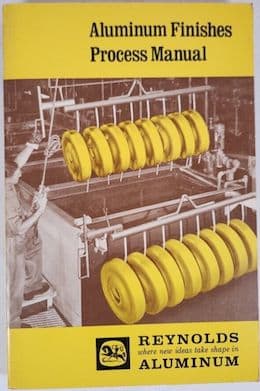
avail from eBay, AbeBooks or Amazon
(as an Amazon Associate & eBay Partner, we earn from qualifying purchases)
How many are there? Just a few on a few odd parts? The whole load is peppered with them? One side of the load is significantly worse than the other?
White spots, aren't just white spots. And if there is one thing I've learned working with anodizing for well over a decade.. White spots can be the most frustrating and difficult to pinpoint and get rid of.
If I don't see another white spot on a part for the rest of my existence, I will be a lot happier and with a lot less grey hair. But I am not that much of an optimist.
Production Technician - Horsens, Denmark
Q. I don't have enough experience to know exactly how to describe them. I am also drawing on memory now as QC did not retain the scrap. The white spots appear to be raw aluminum after looking under a microscope. It would seem that small circular and regularly sized spots, about 0.5-1.5mm across, pop up on random parts of a uniform rack. I believe I could see a layer of seal over these spots, but I am unsure how to go about verifying this. I have had parts in the past that have slightly different spots which I can identify as pits and catch those pits with a small pick, I was unable to do that with these.
I have not personally tried to check for continuity and I am not sure how to do that. Again, I no longer have the specific pieces that this happened to.
Since my post, I have been able to correlate the presence of white spots with the operating temperature of the caustic etch, but every now an again a part will display these spots.
I hope this helps explain the spots I am dealing with.
Lab Rat - Fort Wayne, Indiana
Q, A, or Comment on THIS thread -or- Start a NEW Thread

